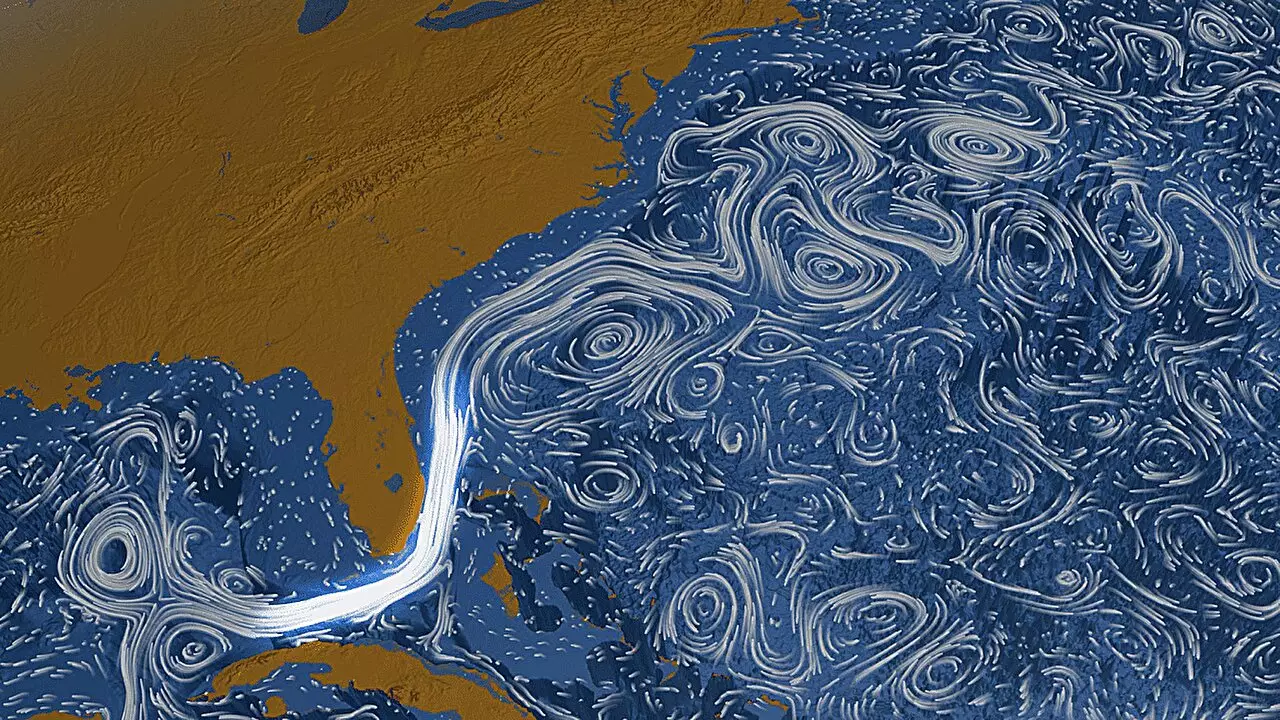The ocean serves as a critical element of Earth’s climate system, influencing weather patterns, climate stability, and the distribution of marine life. As climate change alters global weather and ocean patterns, understanding how major ocean currents adapt is increasingly crucial. A focal point of current research is the Atlantic Meridional Overturning Circulation (AMOC), a key component of the broader Global Meridional Overturning Circulation (MOC). Recent scientific inquiry has sought to quantify not only the evolution of the AMOC but also its potential weakening—an issue that could have significant repercussions for global climate and sea levels.
Among the vital components of the AMOC lies the Florida Current, which runs from the Gulf of Mexico through the Florida Straits, ultimately fueling the Gulf Stream. This rapid current is essential not just for maintaining oceanic heat and salt distribution but also for influencing coastal sea levels and flooding events. The Florida Current’s contribution to the AMOC means that its behavior is under close surveillance by scientists who are increasingly aware of how changes in this current can herald broader climate challenges.
Research has shown that while modeling techniques—from institutions like NOAA—suggest a significant decline in the strength of the AMOC could occur, empirical data has been less conclusive. In a recent study published in *Nature Communications*, a team from NOAA, the University of Miami, and the UK’s National Oceanography Center observed the Florida Current over a 40-year span, leading them to unexpected conclusions regarding its stability.
The research tracked the Florida Current using advanced methodologies, including an ingenious application of a decommissioned submarine cable that captures voltages induced by salt ions carried by the current. This innovative technique—spanning a distance of over 120 kilometers between Florida and the Bahamas—has provided nearly continuous observations, marking it as the longest tenured observational record of any boundary current globally.
Through decades of data collection, the study participants found that the voltage records required recalibration due to evolving magnetic conditions. After accounting for these shifts, scientists determined that the prior indications of a decline in the Florida Current were overstated. Rather than a decrease, the stability of the current over the past four decades came to light, suggesting that previous models projecting a weakening AMOC might need reconsideration.
The implications of this research resonate throughout climate science. Observational discrepancies indicate that the current models predicting a deterioration of the AMOC may not fully account for real-world observations. Previously, models suggested that the AMOC could experience a decline by as much as 45% by the century’s end, linked to vast global phenomena like sea-level rise and extreme weather. However, the new findings emphasize that the Florida Current has stood firm, challenging this narrative.
The scientific community has long understood the Florida Current’s influence on wider climatic systems. Its stability introduces questions regarding the model’s credibility and the detected variations in the AMOC at other latitude points. Denis Volkov, lead author of the study, noted that while current models indicate a potential decline in the AMOC, the data points to the reality that a significant weakening has yet to manifest in the Florida Current.
One essential takeaway from this research is the value of prolonged observational efforts. The AMOC observing framework at 26.5°N, despite being in operation for two decades, still lacks the extensive data needed for conclusive trends. Each observation cycle brings us closer to a deeper understanding but highlights the complexity and variability inherent in oceanic systems. The notion that a weakening AMOC could be occurring without a corresponding shift in the Florida Current suggests a potential lag or a more nuanced interplay that remains to be uncovered.
Furthermore, researchers indicate that it’s plausible for the AMOC to evolve under conditions not yet detectable in current datasets. The research encapsulates beautifully the ongoing mystery of oceanography—the science is continuously developing as we refine our methodologies and increase our monitoring capacities.
As the interplay between the Florida Current and the AMOC becomes clearer, the significance of relentless scientific inquiry cannot be overstated. Observational integrity is critical if we are to understand the impact of climate change on our oceans adequately. The corrected data from the Florida Current adds an essential piece to the complex puzzle of global climate dynamics, calling for further studies to probe deeper into oceanic currents and their profound implications for climate variability. The ocean remains a vast realm, and each new finding reshapes our understanding of a system that’s integral to life on Earth as we know it. With continued research, we might hope to more accurately predict and prepare for the weather patterns and sea levels of tomorrow.


Leave a Reply